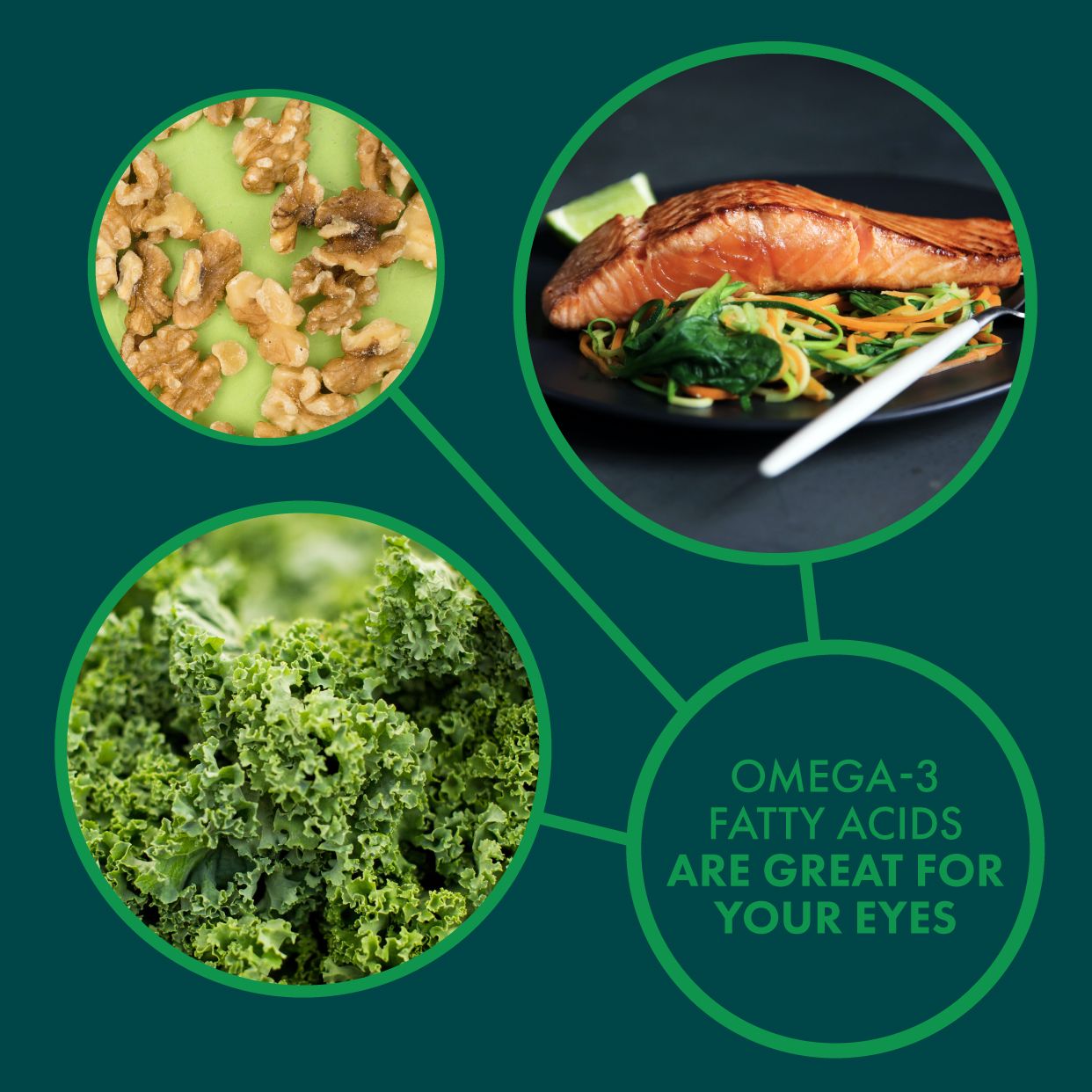Vision is one of our most cherished senses, and the pursuit of maintaining optimal eye health is essential for many aspects of life. Recent studies have increasingly highlighted the role that nutrition plays in preserving eye health, with a particular focus on omega-3 fatty acids. This article delves into the world of omega-3 foods and their significance for our ocular well-being. Join the journey to discover how these remarkable nutrients can enhance your vision and protect against common eye diseases.
Defining Omega-3 Fatty Acids: Essential Compounds for Eye Health
Omega-3 fatty acids are a group of polyunsaturated fats that play a crucial role in overall health, particularly in cardiovascular and cognitive functions. There are three primary types of omega-3s: ALA (alpha-linolenic acid), EPA (eicosapentaenoic acid), and DHA (docosahexaenoic acid). While ALA is primarily found in plant sources, EPA and DHA are predominantly found in marine life.
Interestingly, DHA is especially abundant in the retina, emphasizing its importance for visual function. The retina converts light into neural signals that the brain interprets as vision. Hence, a deficiency of DHA can have a detrimental impact on visual acuity and overall eye health.
The Desirable Duo: Omega-3 and Eye Health
Research has shown that omega-3 fatty acids confer numerous benefits to ocular health, particularly in the prevention of age-related macular degeneration (AMD) and dry eye syndrome. AMD is a leading cause of vision loss in older adults, characterized by damage to the macula, the part of the retina responsible for sharp central vision. Studies have indicated that individuals who consume higher levels of omega-3s have a lower risk of developing AMD.
Furthermore, dry eye syndrome, a common condition that results in discomfort and blurred vision, is linked to reduced production and quality of tears. Interestingly, omega-3 supplementation has been shown to improve tear production and relieve symptoms of dry eyes. This encourages not only the effectiveness of the ocular surface but also ensures that our eyes remain hydrated and healthy.
From Ocean to Plate: Rich Sources of Omega-3 Fatty Acids
Embracing a diet filled with omega-3-rich foods is an effective way to bolster your eye health. Let’s explore some delectable sources of these fatty acids that can easily be incorporated into your diet.
Fatty Fish: The King of Omega-3s
Fatty fish such as salmon, mackerel, sardines, and trout are among the richest sources of EPA and DHA. Serving up just two portions of fatty fish each week can lead to increased omega-3 levels in the body, thereby potentially reducing the risk of eye diseases. These fish can be enjoyed in various culinary styles—from grilling and roasting to incorporating into salads and pastas.
Seeds and Nuts: Plant Power Unveiled
For those who prefer plant-based options, flaxseeds, chia seeds, and walnuts are excellent sources of ALA, a plant-based omega-3. Flaxseeds can be ground and added to smoothies or baked goods, while chia seeds can easily be mixed into yogurt or oatmeal for a nutty flair.
Keeping Nuts like walnuts on hand serves as a convenient and nutritious snack that delivers omega-3s alongside other beneficial nutrients. Their versatility allows for inclusion in granola, salads, or simply enjoyed as a stand-alone snack.
Seafood and Seaweed: Beyond the Tide
For the adventurous palate, seafood such as anchovies and oysters not only provide omega-3s but also offer a wealth of additional nutrients, including zinc which is crucial for eye health. Additionally, seaweed and algae are plant-based foods that contain DHA and EPA, making them an excellent alternative for those following vegetarian or vegan diets.
Fortified Foods: The Modern Approach
The rise of fortified foods has opened new avenues for enhancing dietary omega-3 intake. Many food products, including eggs, yogurt, and milk are now enriched with omega-3 fatty acids, providing a convenient way to integrate these beneficial compounds into your daily regimen.
Practical Steps: Incorporating Omega-3s into Daily Meals
Now that you have a solid understanding of omega-3 sources, the next step is to consider how to seamlessly integrate them into your meal planning. Here are some practical strategies:
Start your day with a nutritious breakfast by incorporating flaxseeds into your smoothie or oatmeal.
Enjoy a light lunch featuring a salad topped with grilled salmon or a tuna sandwich on whole-grain bread.
Experiment with a variety of dinner options by preparing a seafood medley, including shrimp, mackerel, and vegetables.
Snack on a handful of walnuts or create energy-balls with chia seeds for a healthy afternoon pick-me-up.
Don’t forget about desserts; consider making chia pudding or flaxseed cookies to satisfy your sweet tooth while boosting omega-3 intake.
Conclusion: The Playful Challenge Awaits You
As you explore the world of omega-3 fatty acids, the challenge presented is not merely to include them in your diet but to embrace their diverse culinary possibilities. One might consider how many different omega-3-rich foods can be consumed over the next week. Will you opt for a fish dish, incorporate seeds in unusual recipes, or experiment with fortified snacks? Not only will this promote eye health, but it can also ignite culinary creativity.
Incorporating omega-3 foods into your daily routine serves as a proactive strategy for preserving eye health and enhancing overall well-being. By making mindful choices about the foods you consume, you embark on a journey of visual preservation and nutritional enrichment. As research continues to illuminate the significance of these fatty acids, the opportunity to take control of your eye health has never been more enticing.
In the end, the goal remains clear: give your eyes the nourishment they deserve, allowing you to see the beauty of the world in all its vibrance and clarity.
